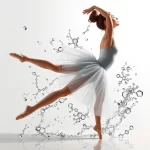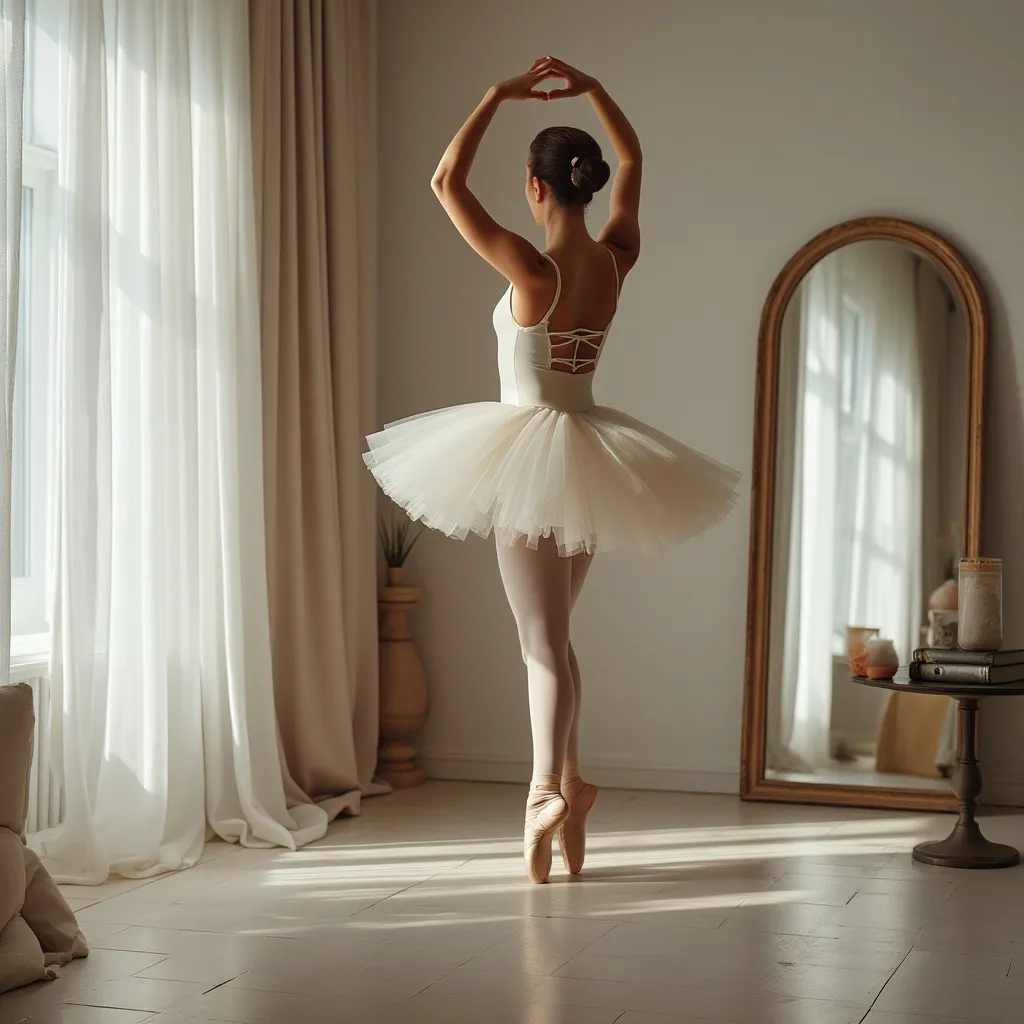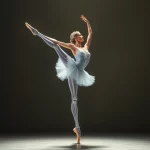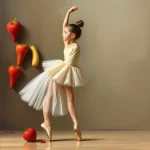The Role of Antioxidants in Recovery for Ballet Dancers

Introduction
Ballet dancing is an art form that demands exceptional physical and mental endurance. The rigorous training schedules, repetitive movements, and high-impact performances can take a toll on a dancer’s body, leading to muscle fatigue, oxidative stress, and even injuries. In recent years, the role of nutrition in enhancing recovery and performance has gained significant attention. Among the various nutritional components, antioxidants have emerged as crucial elements in aiding recovery for ballet dancers. This article delves into the role of antioxidants in recovery, exploring their benefits, sources, and practical applications for ballet dancers.
Understanding Antioxidants
What Are Antioxidants?
Antioxidants are molecules that inhibit the oxidation of other molecules. Oxidation is a chemical reaction that can produce free radicals, leading to chain reactions that may damage cells. Antioxidants neutralize these free radicals, thereby preventing cellular damage. They are naturally found in various foods, particularly fruits and vegetables, and can also be taken as dietary supplements.
Types of Antioxidants
There are several types of antioxidants, each with unique properties and benefits:
- Vitamin C: Found in citrus fruits, strawberries, and bell peppers, Vitamin C is essential for collagen synthesis and immune function.
- Vitamin E: Present in nuts, seeds, and green leafy vegetables, Vitamin E protects cell membranes from oxidative damage.
- Beta-Carotene: A precursor to Vitamin A, beta-carotene is found in carrots, sweet potatoes, and spinach. It is crucial for vision and immune function.
- Polyphenols: These are abundant in fruits, vegetables, tea, and wine. They have anti-inflammatory and antioxidant properties.
- Flavonoids: Found in berries, onions, and dark chocolate, flavonoids have been shown to reduce inflammation and oxidative stress.
The Physical Demands of Ballet Dancing
Muscle Fatigue and Damage
Ballet dancers often engage in intense training sessions that can last several hours. This level of physical exertion leads to muscle fatigue and micro-tears in muscle fibers. The body needs to repair these micro-tears to build stronger muscles, a process that requires adequate nutrition and rest.
Oxidative Stress
Oxidative stress occurs when there is an imbalance between free radicals and antioxidants in the body. High-intensity physical activities, like ballet dancing, increase the production of free radicals. If not neutralized, these free radicals can cause cellular damage, leading to inflammation, muscle soreness, and delayed recovery.
Inflammation
Inflammation is a natural response to muscle damage and is part of the healing process. However, chronic inflammation can hinder recovery and lead to long-term injuries. Managing inflammation through proper nutrition, including antioxidant intake, is crucial for ballet dancers.
The Role of Antioxidants in Recovery
Reducing Muscle Soreness
Antioxidants play a significant role in reducing muscle soreness post-exercise. Vitamin C and E, in particular, have been shown to decrease muscle soreness by neutralizing free radicals and reducing oxidative stress. This allows for quicker recovery and less downtime between training sessions.
Enhancing Immune Function
Intense physical activity can temporarily suppress the immune system, making dancers more susceptible to infections. Antioxidants like Vitamin C and beta-carotene boost immune function, helping the body fend off illnesses and recover more efficiently.
Improving Muscle Repair
Collagen is a protein that is essential for the repair of connective tissues, including tendons and ligaments. Vitamin C is crucial for collagen synthesis, making it an important antioxidant for muscle repair and recovery. Consuming adequate amounts of Vitamin C can speed up the healing process of injured tissues.
Reducing Inflammation
Chronic inflammation can be detrimental to a dancer’s performance and recovery. Antioxidants like polyphenols and flavonoids have anti-inflammatory properties that help reduce chronic inflammation, allowing for better recovery and performance.
Sources of Antioxidants
Fruits and Vegetables
Fruits and vegetables are the richest sources of antioxidants. Some of the best options include:
- Berries: Blueberries, strawberries, and raspberries are high in flavonoids and Vitamin C.
- Citrus Fruits: Oranges, lemons, and grapefruits are excellent sources of Vitamin C.
- Leafy Greens: Spinach, kale, and Swiss chard are packed with beta-carotene and Vitamin E.
- Cruciferous Vegetables: Broccoli, Brussels sprouts, and cauliflower contain various antioxidants, including Vitamin C and polyphenols.
Nuts and Seeds
Nuts and seeds are not only rich in healthy fats but also contain significant amounts of antioxidants:
- Almonds: High in Vitamin E.
- Walnuts: Contain polyphenols and Vitamin E.
- Chia Seeds: Rich in polyphenols and other antioxidants.
Herbs and Spices
Herbs and spices are often overlooked but are potent sources of antioxidants:
- Turmeric: Contains curcumin, a powerful anti-inflammatory and antioxidant compound.
- Ginger: Known for its anti-inflammatory and antioxidant properties.
- Cinnamon: Rich in polyphenols.
Supplements
While it’s best to get antioxidants from whole foods, supplements can be beneficial, especially for those with dietary restrictions or increased needs. Common antioxidant supplements include:
- Vitamin C: Available in various forms, including tablets and powders.
- Vitamin E: Often found in capsule form.
- Polyphenol Supplements: Available as extracts from sources like green tea and grapes.
Practical Applications for Ballet Dancers
Pre-Training Nutrition
Consuming a meal rich in antioxidants before training can help prepare the body for the oxidative stress that comes with intense physical activity. A smoothie made with berries, spinach, and a scoop of chia seeds can be an excellent pre-training option.
Post-Training Recovery
Post-training nutrition is crucial for recovery. Including antioxidant-rich foods in post-training meals can help reduce muscle soreness and speed up recovery. A salad with mixed greens, nuts, and a citrus-based dressing can be a great post-training meal.
Hydration
Staying hydrated is essential for overall health and recovery. Adding antioxidant-rich ingredients like lemon or cucumber slices to water can provide additional benefits.
Supplementation
For those who find it challenging to get enough antioxidants from food alone, supplements can be a practical solution. However, it’s essential to consult a healthcare provider before starting any new supplement regimen.
FAQ
What are the best antioxidant-rich foods for ballet dancers?
The best antioxidant-rich foods for ballet dancers include berries, citrus fruits, leafy greens, nuts, seeds, and herbs like turmeric and ginger. These foods provide a wide range of antioxidants that can help reduce oxidative stress and inflammation.
Can I take antioxidant supplements instead of eating antioxidant-rich foods?
While supplements can be beneficial, it’s generally best to get antioxidants from whole foods. Whole foods provide a complex mix of nutrients that work synergistically to promote health. However, if you have dietary restrictions or increased needs, supplements can be a practical option. Always consult a healthcare provider before starting any new supplement regimen.
How soon can I expect to see the benefits of antioxidants on my recovery?
The benefits of antioxidants can vary depending on individual factors like diet, training intensity, and overall health. Some dancers may notice reduced muscle soreness and quicker recovery times within a few days to weeks of increasing their antioxidant intake.
Are there any risks associated with consuming too many antioxidants?
While antioxidants are generally safe, excessive intake, particularly from supplements, can have adverse effects. For example, high doses of Vitamin E can interfere with blood clotting. It’s essential to consume antioxidants in moderation and consult a healthcare provider for personalized advice.
Can antioxidants help prevent injuries?
While antioxidants can help reduce inflammation and support muscle repair, they are not a substitute for proper training techniques and rest. A balanced diet rich in antioxidants can contribute to overall health and potentially reduce the risk of injuries, but it should be part of a comprehensive approach to injury prevention.
Conclusion
Antioxidants play a vital role in the recovery process for ballet dancers. They help reduce muscle soreness, enhance immune function, improve muscle repair, and reduce inflammation. By incorporating antioxidant-rich foods into their diet and considering supplementation when necessary, ballet dancers can optimize their recovery and performance. As with any nutritional strategy, it’s essential to consult healthcare providers for personalized advice tailored to individual needs and circumstances.





